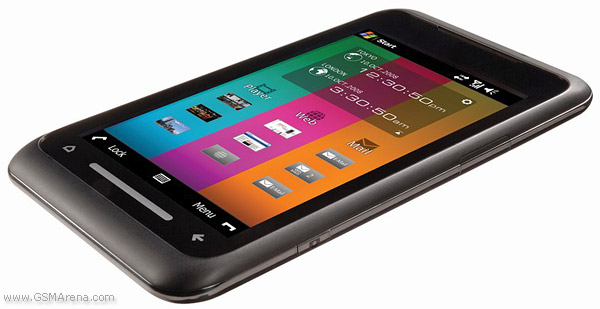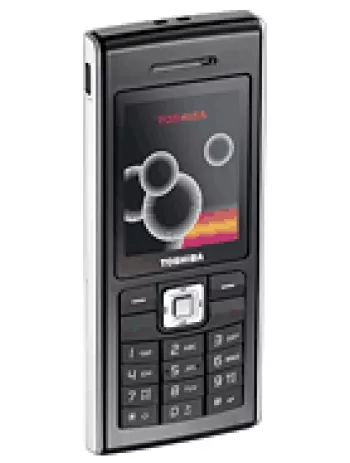
Network
The Toshiba TG01, a notable release from 2009, supported GSM and HSPA technology, facilitating a smooth communication experience common at the time. It operated on 2G bands GSM 850/900/1800/1900 and 3G bands HSDPA 2100, making it compatible with international telecom standards. Users of this device could benefit from HSPA speeds, providing download speeds up to 7.2 Mbps and upload speeds of about 2 Mbps, which was impressive for mobile internet standards during its prime years.
Launch
Announced in January 2009 and officially released in June of the same year, the Toshiba TG01 entered the smartphone market at a time when Windows Mobile 6.1 Professional was gaining traction. However, despite the initial excitement surrounding its release, the device has since been discontinued.
Body
This device had dimensions of 130 x 70 x 9.9 mm, making it one of the more prominent phones in terms of size during its release era. At 129 grams, it balanced the feel of being both lightweight and solid, a suitable combination for regular use. It also used the Mini-SIM format, which was standard before the widespread shift to micro and nano SIMs.
Display
The TG01 featured a 4.1-inch TFT resistive touchscreen capable of displaying 256K colors (though effectively 65K colors). With a resolution of 480 x 800 pixels and a density of roughly 228 ppi, the screen provided clarity and acceptable viewing angles, though it did not reach the vividness of later capacitive screens. The screen-to-body ratio was approximately 52.6%, popular for that period.
Platform
Powered by the Microsoft Windows Mobile 6.1 Professional operating system, the device was later upgradable to Windows Mobile 6.5, offering improved features and fixes over time. At its core, the TG01 was driven by a Qualcomm QSD8250 Snapdragon S1 chipset, a 1.0 GHz Scorpion CPU, and an Adreno 200 GPU. This combination was robust for the demands of the time, providing reliable performance for applications and multitasking within the constraints of the Windows Mobile environment.
Memory
The device came with 256MB of RAM and 512MB of ROM, offering moderate performance for running applications and storing essential data. Additionally, it supported memory expansion through a microSDHC card, allowing users to extend the storage capacity for more applications, media, and files.
Main Camera
The main camera of the TG01 was a 3.15 MP autofocus lens, capable of capturing photos and videos at 480p at 30 frames per second. While not particularly advanced by modern standards, it provided adequate functionality for capturing moments on the go, serving its purpose before the era of high-megapixel smartphone cameras.
Sound
The sound profile of this device included a loudspeaker, but notably omitted a 3.5mm headphone jack, requiring users to adopt Bluetooth or use an adapter. This decision might have seemed forward-thinking, aligning with later trends towards wireless solutions despite being a disadvantage in that era.
Comms
For connectivity, the TG01 included Wi-Fi support on the 802.11b/g standard, Bluetooth 2.0 for wireless communication, and GPS with A-GPS capabilities for navigation. However, it lacked FM radio, which was, at the time, a common feature in mobile phones. Connectivity with computers and other devices was facilitated through a microUSB port, prevalent in devices of that period.
Features
Among its features, the TG01 included an accelerometer sensor for orientation detection, a significant ability needed for applications and games. It also included a browser supporting WAP 2.0/xHTML and HTML through Internet Explorer, which was the default for Windows Mobile, offering a somewhat limited web-browsing experience by today's standards.
Battery
Equipped with a removable Li-Ion 1000 mAh battery, the Toshiba TG01 promised up to 276 hours of standby time on 2G and up to 220 hours on 3G networks. Talk time was rated at up to 5 hours on 2G and 4 hours on 3G, reflecting the power consumption norms for devices of its kind.
Misc Features and Pricing
Available in black and white color variants, the TG01 adhered to SAR (Specific Absorption Rate) standards, with values of 0.37 W/kg for head exposure and 0.44 W/kg for body exposure, indicating it was safe for consumer use by regulatory standards of the time. Priced around 500 EUR upon release, it positioned itself within the higher tier market segment, aiming at users seeking a premium Windows Mobile experience.
Summary
The Toshiba TG01 was a notable device in the evolution of smartphones. Its release represented an era of transitions, both in operating systems with Windows Mobile and in hardware specifications pushing boundary limits then. Today, it serves as a reminder of how far mobile technology has come and remains a part of the lineage contributing to current advancements.
Key Features of Toshiba TG01
- Network Technology: GSM / HSPA with 3G HSDPA 2100
- Slim Profile: Dimensions of 130 x 70 x 9.9 mm
- Lightweight Design: Weighs 129 g
- Large Display: 4.1-inch TFT resistive touchscreen with 480 x 800 pixels resolution
- Upgradable OS: Microsoft Windows Mobile 6.1 Professional, upgradable to 6.5
- Powerful Chipset: Qualcomm QSD8250 Snapdragon S1
- Fast Processor: 1.0 GHz Scorpion CPU
- Expandable Storage: microSDHC (dedicated slot)
- Decent Camera: 3.15 MP main camera with autofocus
- Connectivity Options: Wi-Fi 802.11b/g, Bluetooth 2.0, GPS with A-GPS
- Battery Life: Removable Li-Ion 1000 mAh battery with up to 276 h standby (2G)
- Available in Black and White colors
Disadvantages of Toshiba TG01
- Screen type is TFT resistive touchscreen which is less responsive compared to capacitive touchscreens.
- Limited color depth of 256K colors, effectively 65K, affects the display quality.
- No front camera for selfies or video calls.
- Limited internal memory with only 256MB RAM and 512MB ROM may affect performance and storage capacity.
- No 3.5mm headphone jack, which may be inconvenient for users preferring wired audio solutions.
- No FM radio feature available.
- Operating system is Windows Mobile 6.1, which is outdated and has limited app support.
- Small battery capacity of 1000 mAh may result in shorter usage times.
- Device is discontinued; support and updates are no longer available.
- Relatively high price at launch, around 500 EUR, considering its features.















View Also
More Phones
All Rights Reserved +13665 Phones © Mobilawy 2025

























